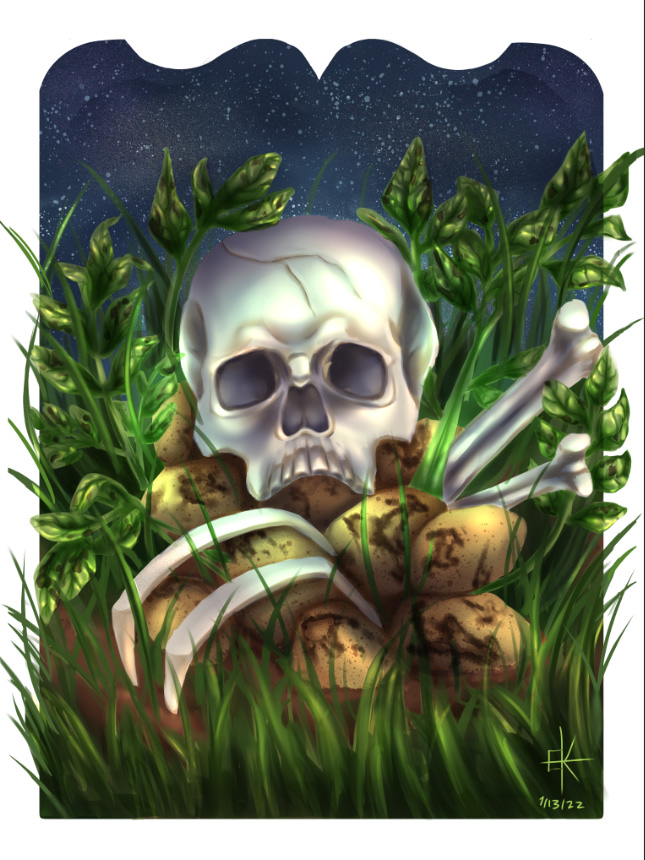by Gabriel Gross
Those who do not heed the lessons of the
past may see history repeat itself.
Ireland is a bustling place full of friendly locals and busy tourists. Whether exploring historic neighborhoods in Dublin, drinking in a local pub, or adventuring along the coast of the Emerald Isle, Ireland has it all. Although you might be thinking to yourself, “Ireland sounds perfect,” it wasn’t always this way. The Great Hunger, or the Irish Potato Famine, plagued Ireland during the 19th century. It led to one million Irish people dying and an additional one million fleeing the country.
Despite their popularity, potatoes are not native to Ireland; they were brought to the country by Sir Walter Raleigh. This particular type of potato—known as the “Irish Lumper”—survived Ireland’s climate and was commonly appreciated by the Irish people because of how healthy and hardy it was. Half of the Irish population was reliant on this crop, especially the poor, which is part of why the potato famine was so devastating.
The famine was largely the result of phytophthora infestans, a fungus that causes blight and targets the tuber of the potato—an underground stem that helps with reproduction. This bacteria was the number one challenge to potato crops worldwide. The potato crop failed quickly when the bacteria hit Ireland, leading to devastating consequences because Irish farmers did not grow any other crops. Another problem this disease caused was terror to the Irish people. Ireland’s population decreased from 8.4 million to 6.6 million people from 1844-1851, largely due to their inability to grow potatoes from 1845-1849.
Some might come to the conclusion that this disease is solely responsible for causing the famine, though there were also various political factors. Britain ruled Ireland at the time, and the two countries were known as the United Kingdom of Great Britain and Ireland. The British regime controlled most of Ireland’s government, including appointing their executive officers. When Britain seized control of Ireland, it snatched up many pieces of land, which were given to the English people. With no power to stand up for themselves to the rich English landlords, the Irish people had to stand by and watch as the British sold any healthy potatoes, leaving Irish citizens with nothing.
Food insecurity, famine, and disease still plague this world today. An example of a modern crisis is the civil war in Yemen, which began in 2014. Twenty million Yemenis struggle with food insecurity, with two million children in that group. Half of Yemen’s citizens do not have access to clean water. An example closer to home would be the water crisis in Flint, Michigan. The city water supply became contaminated in 2014. Lack of action by government officials led to a public health disaster. The past is so much like the present that it seems history really does repeat itself. It’s crucial that we remember historical catastrophes such as what happened in Ireland, while being aware that people are still experiencing the same today.
About Gabe Gross

Gabriel Gross is an eighth grader at St. Thomas school in Peoria Heights. He is the Student Council president. He plans to go to Richwoods and apply for the IB program. He loves baseball, basketball, and traveling. He also enjoys learning about history and how much it has changed our lives today.
Art by Ellie Kraemer

Ellie Kraemer is a sophomore and an animation major at Bradley University who lives and breathes her artwork. Becoming a professional artist and animator has been a goal of hers for many years, as various works of digital art and experience have held a pivotal role in her life. Intrigued by the diverse storytelling prowess of interactive media, she aims to get involved in the productions of visuals for video games and animated series after graduation. You can find more of her work at ekraemer.myportfolio.com.

